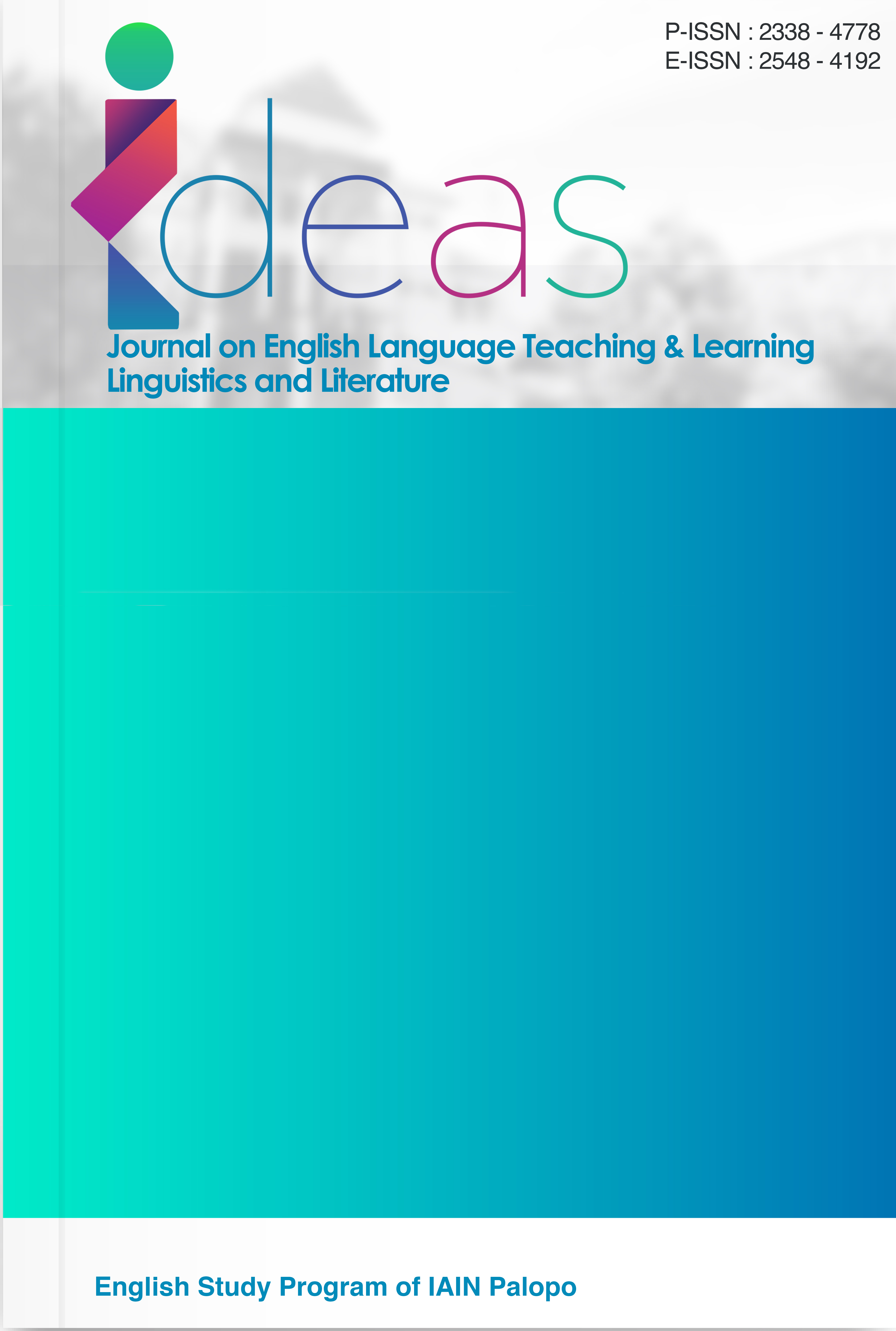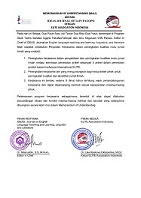Integrating the SAVI Approach with YouTube Videos in Teaching Speaking: A Case Study at Senior High School
DOI:
https://doi.org/10.24256/ideas.v13i2.7224Keywords:
SAVI method; speaking skill; YouTube video; English language teachingAbstract
The use of technology in this era is useful, especially in teaching speaking. This study aims to describe the implementation of the SAVI (Somatic, Auditory, Visual, Intellectual) approach through YouTube videos in teaching speaking. It’s also revealing students' perceptions of the implementation of the SAVI approach in teaching speaking. This study employed a qualitative descriptive method. The data were gathered through classroom observations, questionnaires, and semi-structured interviews with teachers and students. It involved 30 students of the eleventh grade of SMAN 1 Slahung and one teacher. The data were analyzed using the Miles and Huberman model, which involves data reduction, data presentation, and verification. The results showed that the implementation of SAVI through YouTube videos gradually blended movement, hearing, implementation, and reasoning so that learning was more interactive and student-centered and facilitated comprehension before speaking practice. Students rated this approach as helpful and enjoyable. Dealing with the students’ perceptions, they said they are more motivated, actively participating, enriching vocabulary, improving pronunciation, and more confident. The auditory and visual aspects were considered the most helpful, while the somatic supported engagement and intellectually strengthened the analysis. SAVI's approach through YouTube videos helps speaking skills and can be a reference for teachers in designing more interactive and contextual learning.
References
Boonmoh, A., & Jumpakate, T. (2019). Using Scaffolded Instructions to Improve Students’ Skills. REFLections, 26(1), 1–16. https://doi.org/10.61508/refl.v26i1.199840
Daeli, R. (2024). effectiveness of language-related Youtube videos on EFL learning motivation. Working Papers in Language Pedagogy, 18, 37–55. https://doi.org/10.61425/wplp.2023.18.37.55
Dogani, B. (2023). Active learning and effective teaching strategies. International Journal of Advanced Natural Sciences and Engineering Researches, 7(4), 136–142. https://doi.org/10.59287/ijanser.578
Gilakjani, A. P., & Sabouri, N. B. (2016). Learners’ Listening Comprehension Difficulties in English Language Learning: A Literature Review. English Language Teaching, 9(6), 123. https://doi.org/10.5539/elt.v9n6p123
Harmer, J. (2007). Learning the Language of Practice. 4th edition. Curriculum Inquiry, 17(3), 293–318. https://doi.org/10.1080/03626784.1987.11075294
Istiqomah, A. N., Kurniawati, I., & Wulandari, A. N. (2020). The implementation of somatic, auditory, visualization, intellectually (SAVI) learning approach to improve students’ attention toward mathematics learning. Journal of Physics: Conference Series, 1563(1). https://doi.org/10.1088/1742-6596/1563/1/012033
Jane Sherman. (2003). Using Authentic Video in the Language Classroom. Cambridge University Press.
Lander, J. A., & Brown, H. D. (2001). Teaching by Principles: An Interactive Approach to Language Pedagogy. In Language (Vol. 71, Issue 4, p. 843). https://doi.org/10.2307/415773
Madhu, Shuvankar. Dibyendu, B. (2023). Learning Styles Preferences among the Students. International Journal For Multidisciplinary Research, 5(1), 1–12. https://doi.org/10.36948/ijfmr.2023.v05i01.9015
Matthew B. Miles, A. Michael Huberman, J. S. (2014). Qualitative data analysis: a methods sourcebook. In Sustainability (Switzerland) (Vol. 11, Issue 1).
Mayer, R. E. (2001). Multimedia Learning- 2nd Edition. In Sustainability (Switzerland) (Second Edi, Vol. 11, Issue 1). University of California, Santa Barbara.
Meier, D. (2000). The Accelerated Learning Handbook A Creative Guide to Designing and Delivering Faster, More Effective Training Programs. In McGraw-Hill.
Moleong, L. J. (2012). Metode Penelitian Kualitatif. Sustainability (Switzerland), 11(1), 1–14.
Piaget, J. (1952). Piaget When Thinking Begins10272012_0000.pdf (pp. 25–36).
Ramadhani, G. P., & Samsi, Y. S. (2023). Efl Junior High School Students’ Perception Towards Using Youtube in Learning Process of English Listening Skills. EDUSAINTEK: Jurnal Pendidikan, Sains Dan Teknologi, 11(1), 351–366. https://doi.org/10.47668/edusaintek.v11i1.970
Richards, J. C., & Rodgers, T. S. (2001). Approaches and Methods in Language Teaching. In Cambridge University Press. (Vol. 70, Issue 4, p. 420). https://doi.org/10.2307/326829
Saed, H. A., Haider, A. S., Al-Salman, S., & Hussein, R. F. (2021). The use of YouTube in developing the speaking skills of Jordanian EFL university students. Heliyon, 7(7), e07543. https://doi.org/10.1016/j.heliyon.2021.e07543
van Lier, L. A. W., & Larsen-Freeman, D. (1987). Techniques and Principles in Language Teaching. TESOL Quarterly, 21(1), 146. https://doi.org/10.2307/3586360
VYGOTSKY, L. S. (1985). Mind in Society The Development of Higher Psychological Processes. Harefuah, 108(3–4), 101–103. https://doi.org/10.3928/0048-5713-19850401-09
Downloads
Published
Issue
Section
Citation Check
License
Copyright (c) 2025 Intan Auria Pratiwi, Desi Puspitasari

This work is licensed under a Creative Commons Attribution-ShareAlike 4.0 International License.
Authors retain copyright and grant the journal right of first publication with the work simultaneously licensed under an Attribution-ShareAlike 4.0 International (CC BY-SA 4.0) that allows others to share the work with an acknowledgement of the work's authorship and initial publication in this journal.
Authors are able to enter into separate, additional contractual arrangements for the non-exclusive distribution of the journal's published version of the work (e.g., post it to an institutional repository or publish it in a book), with an acknowledgement of its initial publication in this journal.
Authors are permitted and encouraged to post their work online (e.g., in institutional repositories or on their website) prior to and during the submission process, as it can lead to productive exchanges, as well as earlier and greater citation of published work (See the Effect of Open Access)




